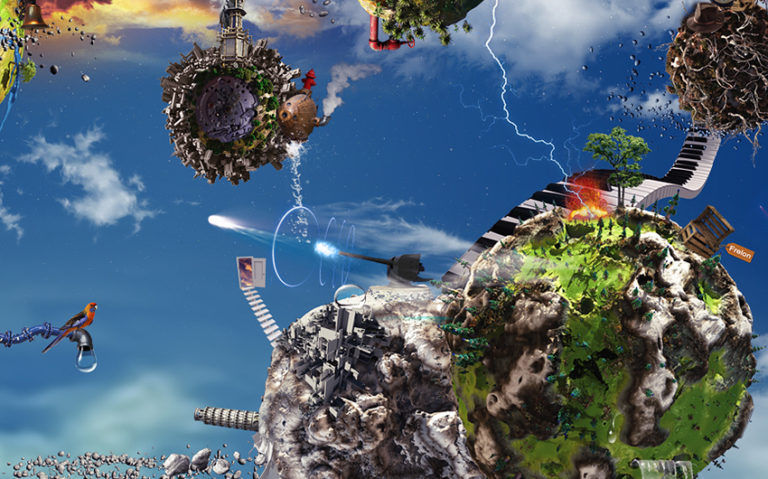AI is the icing on the cake for nuclear and geothermal.
- The huge build-out of data centres to train and run AI algorithms is raising concerns about where the electricity to power these centres is going to come from and it is becoming clear that the only carbon-free sources that make sense for this use case are either nuclear or geothermal.
- Data centres require constant, always-on power and their consumption does not vary with the time of day or day of the week.
- By contrast, humans are very different, and this means that demand on the electricity grid fluctuates substantially depending on the time of day.
- Hence, the best solution for humans is one where a constant supply of power (coal, gas, oil, nuclear, geothermal) is augmented by one that can be turned up and down very easily (wind and solar).
- However, because data centres are very consistent in their demand, their impact on the grid is to raise the minimum required level of power as opposed to increasing the variation between the peaks and troughs of electricity demand.
- This is why wind and solar are not well suited to meet the data centre demand for electricity leaving only nuclear and geothermal as sources of carbon-free electricity.
- This is rapidly becoming a problem as adding up the requirements of all of the proposed data centres leads one to conclude that data centres will require far more power than is currently available.
- I very much doubt the population is willing to endure rolling blackouts so that the algorithms can be trained and run meaning that either more power is built or there will be less AI.
- Consequently, the focus is on how to deliver more carbon-free baseload power which is one reason why there is a growing interest in using nuclear and geothermal to provide electricity for data centres.
- The historical problem with nuclear is that it has only been available in massive installations that produce around 1 gigawatt of power that take 10 years or more to build.
- This is not an ideal solution which is why we have seen the hyperscalers strike deals to build data centres next to existing stations (Amazon) or restart an idle reactor (Microsoft).
- Another solution is to use small modular reactors (SMRs) which have been in use in military applications such as nuclear submarines for decades.
- SMRs are much easier to build as they can be prefabricated at a factory and shipped already fuelled on the back of a truck to the location where they will be installed.
- Some can also be installed in old fossil fuel power stations and connected up to the steam turbines for maximum asset reuse.
- However, designs for civilian uses are only just beginning to be approved which means that, at the moment, they struggle to compete with the economics of the far more established larger reactors.
- I don’t think this will always be the case, and there are already multiple designs in development. Google has ordered seven SMRs from a company called Kairos Power that it hopes will deliver 500MW to its data centres by 2030.
- The problem is that getting approval to run nuclear reactors for civilian power generation takes a long time and for SMRs, the regulatory process is at a fairly early stage.
- Furthermore, each design has to be individually approved which further adds to lead times.
- For example, the Kairos power design has only been approved as a 50MW demonstration reactor that has not been built yet meaning that Google’s target of 2030 looks pretty ambitious to me.
- An alternative to nuclear power is geothermal which has been very promising for decades, but the lack of suitable locations has meant that it has not been able to get meaningful traction.
- However, the technology is moving such that many more locations may become suitable for geothermal with assets from the oil and gas industry being able to be re-used to drill the wells.
- This means that there is scope for geothermal to become a much more substantial provider of carbon-free baseload power which will help to meet the rapidly increasing demand for electricity.
- In 2000, the internet suffered a multi-year correction as it was unable to deliver upon the expectations that had been set for it and it took another 10-15 years to really live up to the promises set in 1999 and become the ubiquitous medium that it is today.
- I suspect that AI will be similar as there is plenty of evidence that AI, as it is today, needs substantial technological breakthroughs before it can live up to the superintelligent capabilities that its proponents suggest are imminent.
- The only problem is that if nuclear and geothermal get caught up in the AI story, they will become susceptible to negative sentiment when AI encounters its inevitable correction.
- The difference for nuclear and geothermal is that AI is the incising on the cake and not the cake itself.
- Economic development in developing markets and a drive for decarbonisation provide substantial fundamental support without having to rely on AI to drive demand.
- I have a long position in nuclear power through nuclear fuel in the form of physical Uranium, sector ETFs and specific Uranium mining companies.
- Geothermal still has some way to go before there are good options for investors in public markets although the private markets are heating up.










Blog Comments
Paulo Bernardocki
October 15, 2024 at 1:43 pm
Hydro is an alternative in certain regions.